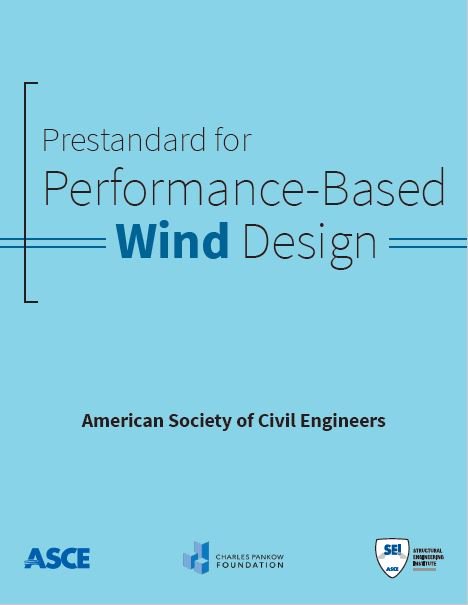ASCE Structural Engineering Institute Announces New Prestandard for Performance-Based Wind Design

RESTON, Va. – The American Society of Civil Engineers (ASCE) Structural Engineering Institute (SEI) has published ASCE/SEI Prestandard for Performance-Based Wind Design. SEI received a research grant from the Charles Pankow Foundation for $150,000 with co-funding support from the ACI Foundation, American Institute of Steel Construction, ASCE Industry Leaders Council and the MKA Foundation, to develop and publish the Prestandard.
This Prestandard presents a recommended alternative to the prescriptive procedures for wind design of buildings contained in the International Building Code (IBC) and in the nationally adopted standard, Minimum Design Loads and Associated Criteria for Buildings and Other Structures (ASCE 7).
While providing performance-based approach for wind that is compatible with current performance-based approaches for seismic design, if properly implemented, the Prestandard results in buildings that are capable of achieving the wind performance objectives specified by ASCE 7—and in many instances—superior performance to these objectives.
“We are thankful for the Charles Pankow Foundation and industry partners’ funding of the development of the ASCE/SEI Pre-Standard for Performance-Based Design for Wind,” said Don Scott, P.E., Vice President and Director of Engineering of PCS Structural Solutions and Prime Investigator who led the Prestandard development team. “This research will advance the use of performance-based design procedures for the design of tall buildings and enhance their performance during wind events. These procedures will allow for innovation by the design profession to use unique or unusual structural systems, incorporate novel materials and design approaches for tall buildings to better protect the health, safety and welfare of the public.”
The Prestandard’s intended audience includes structural engineers, architects, building component and cladding specifiers/designers and building officials engaged in the wind design and review of buildings. Major innovations introduced in the Prestandard include nonlinear dynamic analysis for wind design, limited inelasticity in the Main Wind Force Resisting System elements, system-based performance criteria and enhanced design criteria for the building envelope.
ASCE/SEI Prestandard for Performance-Based Wind Design is available as a free download from ASCE, SEI and CPF websites.
ABOUT THE AMERICAN SOCIETY OF CIVIL ENGINEERS
Founded in 1852, the American Society of Civil Engineers represents more than 150,000 civil engineers worldwide and is America’s oldest national engineering society. ASCE works to raise awareness of the need to maintain and modernize the nation’s infrastructure using sustainable and resilient practices, advocates for increasing and optimizing investment in infrastructure, and improve engineering knowledge and competency. For more information, visit www.asce.org or www.infrastructurereportcard.org and follow us on Twitter, @ASCETweets and @ASCEGovRel.
About ASCE Structural Engineering Institute
Established in 1996, SEI advances our members’ careers, stimulates technological advancement, and improves professional practice. SEI drives the practical application of cutting-edge research by improving coordination and understanding between academia and practicing engineers. For more information, visit www.asce.org/SEI and follow us on Twitter, @ASCE_SEI.


